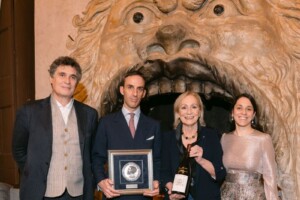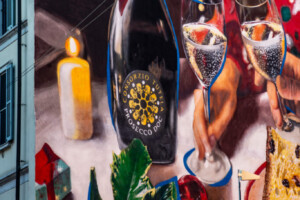“We are not fighting the competition battle with equal weapons: between the Old and the New Worlds of wine there exists an enormous legislative difference that bridles us and gives free reign and total liberty to others”. This was the declaration made by Gianni Zonin, the largest vineyard producer in Italy (he owns 11 estates and over 1,800 hectares of vineyards) during a request recently to make adjustments in wine legislation between Europe and countries outside of Europe in order to avoid a rough defeat in the battle of international competition.
Zonin explained, ”We are confronted with a decisive challenge, and either New World countries must adapt to European wine laws or Europe must be freed from so many restrictions. The way things are now, we risk being like a boxer who is called to fight the world championship with one hand tied behind his back”.
Another urgent problem that Zonin called attention to is the “European vineyard”, which is, at this point, almost obsolete. “ It takes huge financial efforts to replant [vineyards]. An approximate calculation for replanting the vineyards in Italy alone would require an investment of 25 billion euros. In fact, of the 750,000 hectares that are in production, only 250,000 have been renewed. For the remaining 500,000 hectares, calculations to renew them come to about 50,000 euros per hectare, for a total of about 25 billion euros. It’s obvious that winemaking companies alone can not afford this, so the European Union must activate some sort of ad hoc financing to reconstitute one of our “instrumental goods”. It would be wise for the EU to offer 50% of the resources. If at least these two most urgent questions are not resolved then the challenges that the Italian wine world faces in the third millennium can not be confronted”.
”Today, the wine world is divided into two segments: on one side there is Europe, the cradle of traditional wine, and on the other side the so-called “New World” winemakers, represented by countries who have recently emerged in the sector, like Australia, California, Chile, Argentina, and South Africa. The challenge that will present itself in the years to come can not be sustained alone, within our own national markets, but response must be articulated in terms of a “European system”, that which will safeguard the diversity and necessary particularities, to create a common action by all producers. If, in fact, I look at Italy, I see companies that are too small, vineyards that are too old, and at the same time a restriction of land covered by vineyards, a market that is continuously more selective, an ever smaller amount of wine consumed per capita, an excess of norms and an insufficient safeguarding of denominations, ever tougher competition on the global market that small companies can not sustain, and an inefficiency of the “Country system” that has not been able to push Italian wine onto emerging country markets. And that which I see in Italy does not seem much different from what is occurring in the rest of Europe, though with less severity”.
On the contrary, in New World territories that have never before had viticulture, if not a small residual amount imported by immigrants, today they are producing huge quantities of wine and above all they are planting tens of thousands of hectares of new vineyards each year. If we design a world map of wine, we see that the EU has gone from having 70% of the entire world vineyard surface area down to 50% over the past 30 years. The most established New World countries, like the U.S., Australia, and Argentina, are reaching production rates that are directly competitive with those of Italy, France, and Spain. If we do not take into serious consideration this new wine geography and if we do not understand that the power relations are radically changing, we will not be able to enact any action to contrast this commercial and productive expansion”.
”First and foremost we must review legislation. In Australia, as well as in the U.S. and all of South America, because winemaking practices that are strictly prohibited here are allowed there, with no hindrances for planting new vineyards and the quantity of wine produced, thus the hectares of vineyards that are in production are only regulated by the market. The cost of land is far greater and allows these wineries to work according to market demand. Instead, the regime of European quotas does not allow for the same flexibility within our wineries. In Italy there is the obligation to receive the right to replant vineyards, even binding conditions within the confines of each region. If I look at Italy, I see an ever more evident reduction of vineyards: over the past twenty years we have gone from over one million hectares to less that 800,000 hectares.
”While Europe’s production continues to be hindered, our competitors are assaulting us with wines that are always ready, always the same, with great flexibility to satisfy market demands and with favorable price dumping even on the smallest management costs for their companies.
”The result is that today New World countries retain a notable part of global wine earnings, with growth that is moving at double digit percentage rates. And in Europe, there are the highest rates of surplus and a reduction in consumption (and the warning alarm rings again for Europeans: we drink less here, while the rest of the world continues to drink more wine, with the particularity that the rest of the world continues to be served more by our competitors.
”Thus the priorities are: the harmonizing of world legislation with that of Europe and with the diffusion of criteria for territoriality and the imposition of common rules for vineyards and wineries, and support for the renewal of the “European vineyard”, requesting that the EU finance the improvement of our wine patrimony by reimbursing winemakers with 50% of costs. These are the most urgent interventions that are needed, which constitute the foundation on which we can set the future of our wine-growing sector. I believe that only in this way will European wine be able to successfully confront the challenges of globalization, and so Europe can remain, as it always has been, the top wine producer worldwide”.
Copyright © 2000/2025
Contatti: info@winenews.it
Seguici anche su Twitter: @WineNewsIt
Seguici anche su Facebook: @winenewsit
Questo articolo è tratto dall'archivio di WineNews - Tutti i diritti riservati - Copyright © 2000/2025








































































































































































































